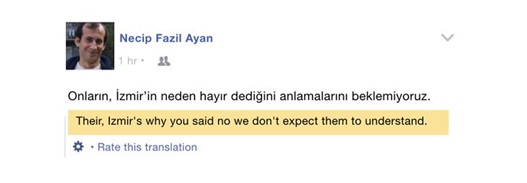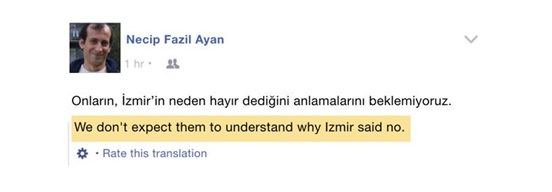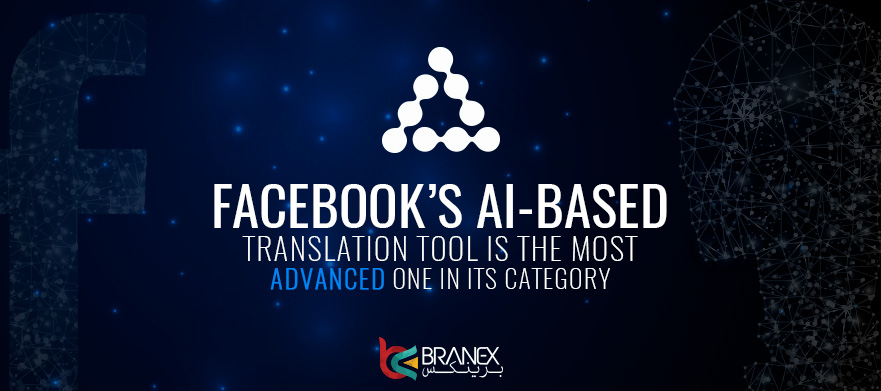“Facebook was not originally created to be a company. It was built to accomplish a social mission – to make the world more open and connected.” – Mark Zuckerberg – Co-founder & CEO – Facebook
Facebook is the world’s most popular social media network. As of September 30th, 2017, Facebook reported 2.07 billion monthly active users. This is a phenomenal achievement as currently no other company can even dream of boasting a more staggering user base.It is single-handedly responsible for changing the way we interact with our loved ones. Facebook has also changed the very definition of “Friend” as “To friend” is now a verb and although “share” and “like” are used in the same literal sense, Facebook has brought an entirely new weight to the terms.
As the Facebook community grew exponentially over the years, you must have encountered several posts in your Facebook life that were foreign to you. However when such a post appears on your news feed, what do you do? You simply tap a button and translate it to your language. However, akin to a plethora of other online translation services, Facebook’s translation service previously came with a caveat: it didn’t always make sense. After all, creating highly accurate, seamless translations for some 2 billion audience is a tough nut to crack, especially when it comes to accounting for intent, abbreviations, typos, slang, and context simultaneously! However, when Facebook decided to up their game and bring in the power of neural networks, they might have revamped the translations arena a whole notch up!
Here’s an example to prove the power of translations for Facebook audience: Italy drew level with Sweden 0-0 on 13th November, 2017 and that was enough for them to miss the football world cup in 2018 for the first time in 60 years. This generated lots of negative reaction from people all over the world on the social media. Facebook and Twitter were abuzz with angry fans asking to sack the big names who failed to qualify for the FIFA’s flagship tournament. Fans across the globe were able to exchange views on this issue and transcend all language barriers, thanks to Facebook translation.
Related Read: How Facebook Algorithms Work and How You Can Increase Your Organic Reach
A Revolutionary New Translation Tool
Facebook’s translation tool, as we knew it, was launched in 2011 and Microsoft’s Bing was responsible for performing the translations at that time. In the beginning, Facebook users were able to use a Translation button next to the comments written out in any language other than English,and the translation would pop up in a separate window. Only recently, Facebook performs over 4.5 billion automatic translations and capitalizes on neural networks to achieve this mammoth task smoothly and more accurately.
Earlier this year in May, Mark Zuckerberg gave us a glimpse of what’s coming our way. He stated:“Today we’re publishing research on how AI can deliver better language translations. With a new neural network, our AI research team was able to translate more accurately between languages, while also being nine times faster than current methods.”
So what’s so cool about this feature and how will it revolutionize the way we translate text on the Internet? After all, we can use Google translate and other free services. Facebook has immense faith in this system as they believe this new tool can change the way people usethe translation services on the Internet. So from the simple phrase-based machine translation model, Facebook’s approach now relies on neural networks. Let me define this aspect in detail now so everyone can understand why Facebook has great hopes for the future.
Incorporating Neural Networks for Translation
Facebook has incorporated neural networks in its translation tool, which is a complex mathematical system capable of learning tasks by analyzing copious amounts of data. If you are still hiding under a rock and are oblivious to this earth shattering discovery, let me tell you that this technique is already in use in several other fields and has helped evolve image and speech recognition for the better. Similarly, now it is being used by Facebook for overhauling machine translations.
Facebook is banking upon Convolutional Neural Networks (CNN), a technique invented by Yann LeCun, an experienced researcher who now heads Facebook’s AI lab. CNN can analyze many different pieces concurrently and then organize those smithereens into a logical hierarchy. It is akin to the long Short-term memory network (LSTM) which we are coming on to next.
Google also attempted at making use of neural networks when in 2016, it unveiled a new translation system based on this burgeoning innovation. Google successfully surpassed existing models at that time such as the ones being used by Microsoft. Now Facebook is trying to climb a notch up and use neural networks to incorporate AI in its translation services. This is how it plans to account for typos, slang, context, etc. LSTM is what makes Facebook Translations impeccable.
Related Read: How to Create a Compelling Facebook Post
How Long Short-term memory network (LSTM) works?
The attention span is the key difference between the old system and the new. Phrase based translation is now being replaced by neural networks, which can take into factor whole sentences at a time. In this way, LSTM, a particular sort of machine learning component, is being applied now. The benefits are pretty clear as we get an accurate sentence after translation,retaining the full context of the original one.
Compare these two Turkish-to-English translations to glean a complete picture of the evolution. The picture below comes from the flawed phrase based system, while the one below it comes from the new system.
The company’s explanation in this regard is what makes it quite interesting: “When a word in a sentence doesn’t have a direct corresponding translation in a target language, the neural system will generate a placeholder for the unknown word. A translation of that word is searched for in a sort of in-house dictionary built from Facebook’s training data, and the unknown word is replaced. This allows abbreviations like “tmrw” to be translated into their intended meaning — “tomorrow.”
“Neural networks open up many future development paths related to adding further context, such as a photo accompanying the text of a post, to create better translations,” the company said. “We are also starting to explore multilingual models that can translate many different language directions.”
Final Word
People from across the globe communicate with each other on various groups and forums on Facebook. But the different languages they speak hitherto created a hurdle in ensuring smooth communication. Facebook Translation is being billed by the company as the ultimate solution for this problem. Facebook has not only published a paper describing the working of this tool but also generously shared the code with everyone else,making it an open-source tool. So we can rightly anticipate new features in Facebook Translation in a not so distant future.
As Facebook Translation is still evolving as a tool, I am sure most of you are not aware of how it can benefit you as an individual or a small company/startup. Feel free to come up with any question in your mind so that I can answer it. You can also give your valuable feedback for this blog using the comments section below.










